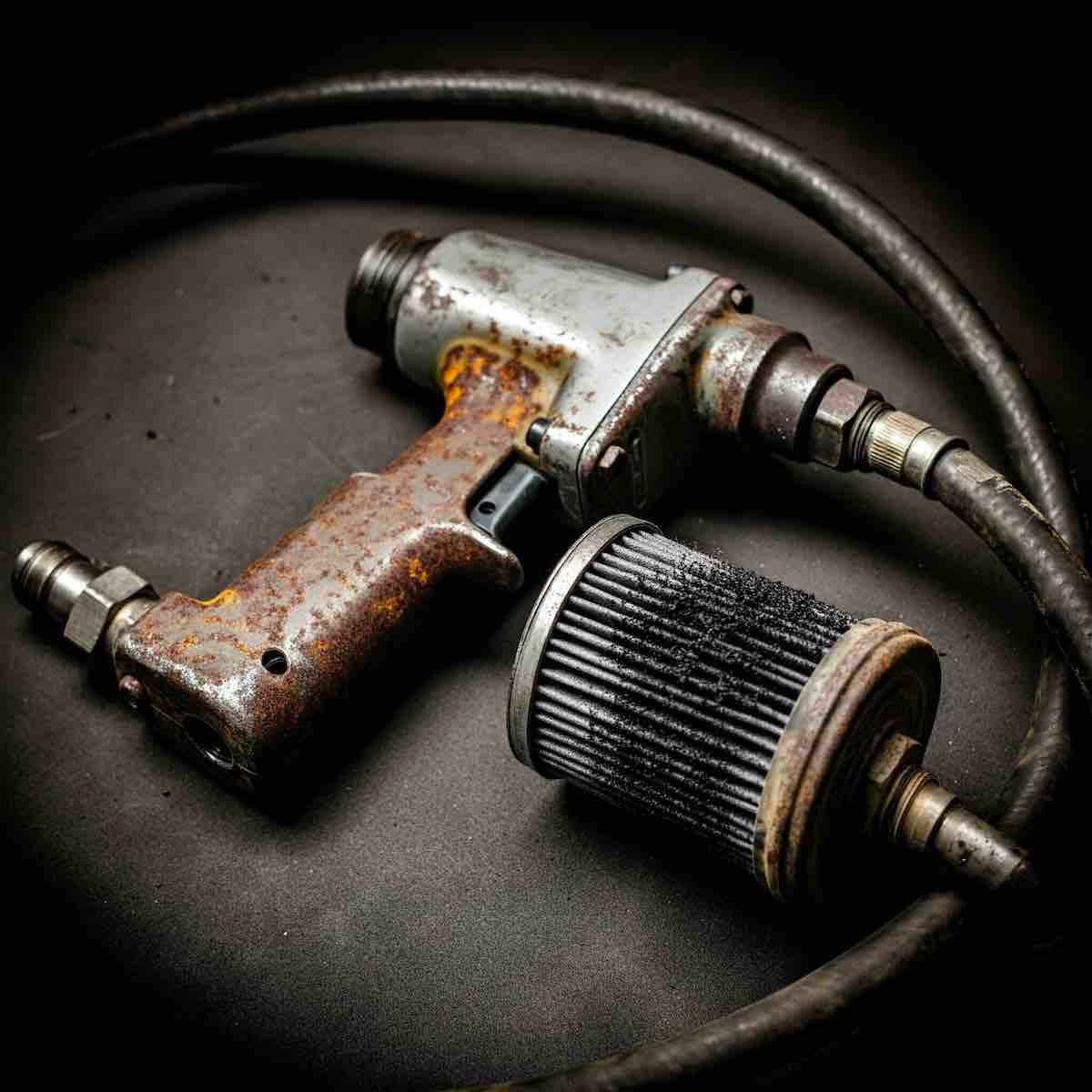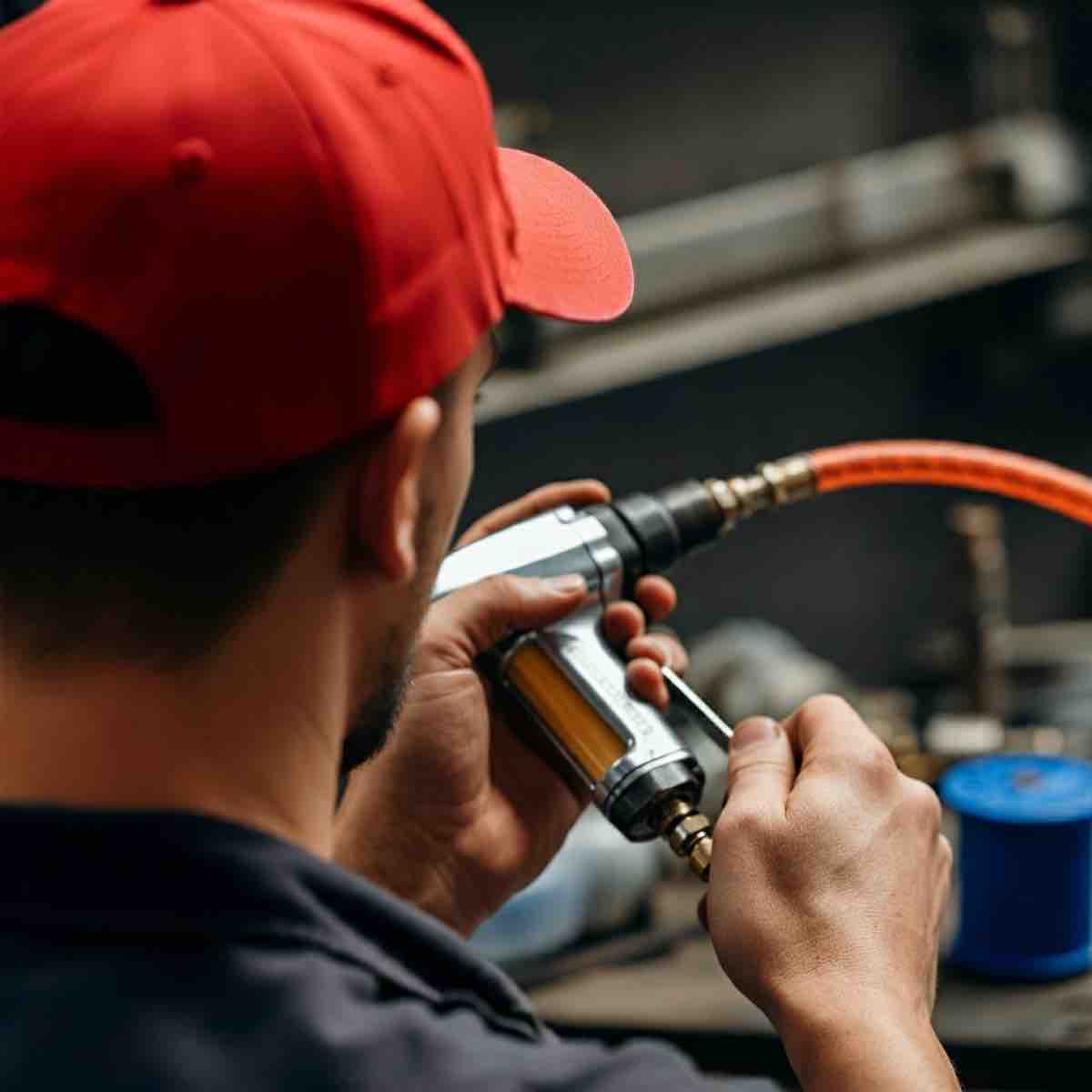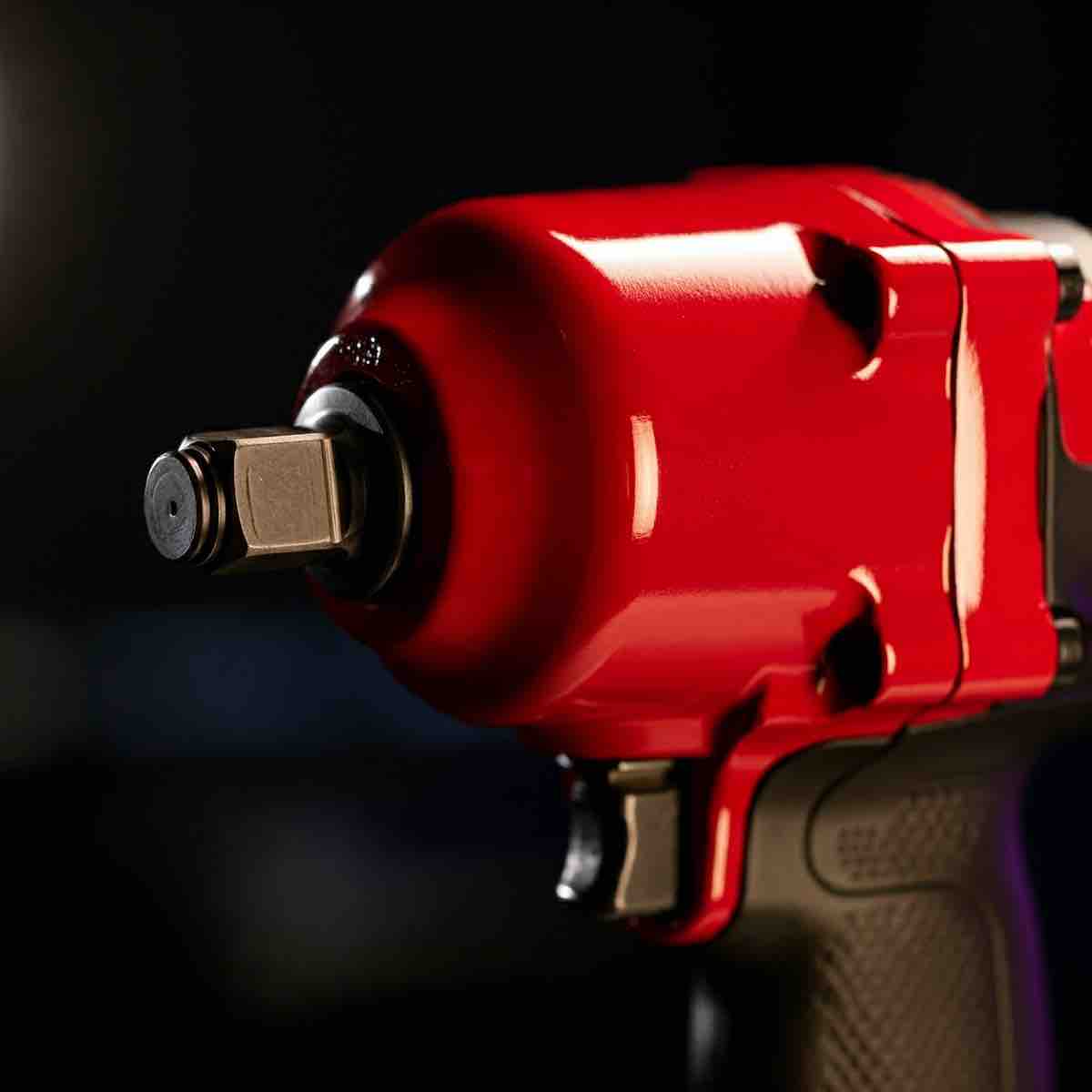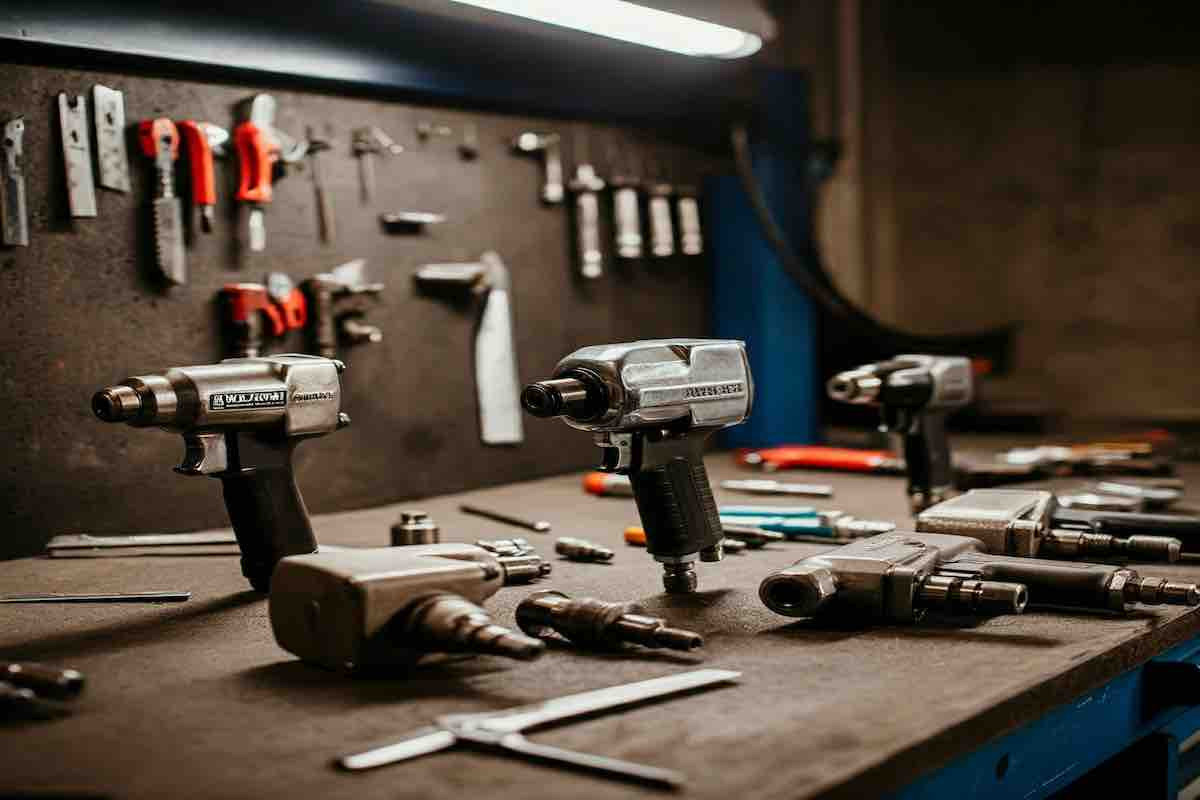How to Maintain Your Air Tools for Longevity and Peak Performance: A Complete Guide
Professional air tools are significant investments that require proper maintenance to ensure longevity and optimal performance. This comprehensive guide provides detailed information about maintaining your pneumatic tools, from daily care to long-term storage solutions.
Key Takeaways:
- Proper filtration and air quality management are essential
- Regular lubrication prevents premature wear
- Systematic maintenance schedules extend tool life
- Correct storage methods prevent deterioration
- Understanding tool mechanics enables better maintenance
Understanding Air Tool Mechanics
How Air Tools Work
Air tools operate using compressed air power, which drives various mechanical components:
- Air Motor Types
- Vane Motors: Common in grinders and sanders
- Piston Motors: Used in impact tools
- Turbine Motors: Found in high-speed tools
- Critical Components
- Air Inlet
- Motor Assembly
- Lubricating System
- Exhaust Port
- Tool-specific Mechanism
Air Requirements
| Tool Type | Required PSI | CFM Requirements | Recommended Hose Size |
| Impact Wrench | 90-100 | 4-5 CFM | 3/8" |
| Air Sander | 90-100 | 6-7 CFM | 3/8" |
| Air Drill | 90-100 | 3-4 CFM | 3/8" |
| Spray Gun | 40-60 | 8-12 CFM | 3/8" |
| Die Grinder | 90-100 | 5-8 CFM | 3/8" |
Air Quality Management for Pneumatic Tool Longevity
Maintaining clean, dry air is paramount for the lifespan and performance of your pneumatic tools. A robust air quality management system will safeguard your investment and ensure optimal operation.
Filtration Systems

filtration Systems: A multi-stage filtration setup is key. Start with primary filtration (40-micron) to remove large particles, followed by secondary filtration (5-micron) for finer contaminants. For critical applications like spray painting, consider a coalescing filter (0.01-micron) to eliminate oil aerosols. Regular filter checks and timely replacements are essential.
Proper filtration is crucial for tool longevity:
- Primary Filtration (40-micron)
- Removes large particles
- Change every 3-6 months
- Monitor pressure differential
- Secondary Filtration (5-micron)
- Removes finer particles
- Replace every 6 months
- Install before air lines
- Coalescing Filter (0.01-micron)
- Removes oil aerosols
- Change annually
- Required for spray painting
Moisture Control
Moisture Control: Moisture is a pneumatic system's enemy, leading to corrosion and decreased efficiency. Combat this by installing water separators desiccant dryers in humid environments, and routinely draining your compressor tank. Properly sloping air lines and monitoring relative humidity further produce a dry air supply.
Implement these practices to manage moisture:
- Install water separators at key points
- Use desiccant dryers for critical applications
- Drain compressor tanks daily
- Slope air lines for proper drainage
- Monitor relative humidity
Lubrication Systems: The Lifeblood of Your Pneumatic Tools

Proper lubrication is the cornerstone of pneumatic tool maintenance, minimizing friction and wear while ensuring optimal performance and longevity. Understanding the different types of lubricants and lubrication methods is crucial for selecting the right approach for your specific tools and operating conditions.
Types of Lubricants
Choose the proper lubricant for your tools:
Air Tool Oil: Specially formulated for pneumatic tools, air tool oil is designed to atomize effectively in the air stream, providing optimal lubrication to internal components. Choose the appropriate viscosity (ISO grade) based on your tool's requirements and operating conditions. Synthetic air tool oils offer superior performance in extreme temperatures and high-pressure environments.
ISO 32 grade for general use
ISO 46 for heavy-duty applications
Synthetic options for extreme conditions
Greases: Used for lubricating bearings, gears, and other high-load components, greases provide a thicker, more durable protective layer. Based on the specific application and operating temperature range, select the appropriate grease type (lithium-based, moly-based, or synthetic).
Lithium-based for bearings
Moly-based impact mechanisms
Synthetic for high temperatures
Lubrication Methods
Manual Lubrication
Manual Lubrication: The most common method involves adding a few drops of air tool oil to the tool's air inlet before each use. This method is suitable for intermittent use and light-duty applications. However, it requires consistent attention and may not provide adequate lubrication during extended operation.
Add 2-3 drops before use
Lubricate after cleaning
Check oil ports regularly
Automatic Systems
Automatic Lubrication Systems: Automatic lubrication systems offer a more reliable and efficient solution for heavy-duty applications and continuous operation. These systems deliver a constant or metered lubricant supply to the tool, always ensuring optimal lubrication. Common types include:
Inline Oilers: Installed in the air line, inline oilers inject a small amount of oil into the air stream, providing continuous lubrication to the tool.
Fog Lubricators: These systems create a fine mist of oil carried by the air stream to the tool's internal components.
Pulse Lubricators: Delivering a precise amount of oil at set intervals, pulse lubricators offer greater control over lubrication and reduce oil consumption.
Choosing the Right Lubrication System
The ideal lubrication system depends on your specific tools, operating conditions, and maintenance preferences. Consider factors such as tool type, frequency of use, operating environment, and desired level of automation. Consult your tool's manual for manufacturer recommendations and seek expert advice if needed.
Remember, proper lubrication is not just about adding oil; it's about using the right lubricant in the right way. By implementing a well-designed lubrication system, you can significantly extend the lifespan of your pneumatic tools, minimize downtime, and ensure peak performance.
Maintenance Schedules
Daily Maintenance
- Check air pressure settings
- Inspect hoses and connections
- Add required lubrication
- Clean external surfaces
- Test operation briefly
Weekly Tasks
- Deep clean external surfaces
- Check all fittings and seals
- Inspect wear components
- Test safety mechanisms
- Verify proper operation
Monthly Procedures
- Complete disassembly cleaning
- Bearing inspection and lubrication
- Seal replacement if needed
- Performance testing
- Calibration checks
Tool-Specific Maintenance

Impact Wrenches
- Clean anvil weekly
- Inspect hammer cage monthly
- Lubricate impact mechanism daily
- Check trigger operation
- Monitor anvil wear
Air Sanders
- Clean dust collection system daily
- Check pad condition weekly
- Inspect bearings monthly
- Clean motor assembly quarterly
- Replace worn components as needed
Air Drills
- Clean chuck mechanism weekly
- Lubricate gears monthly
- Check speed control operation
- Inspect clutch mechanism
- Test reverse operation
Spray Guns
- Clean immediately after use
- Check nozzle condition daily
- Clean air passages weekly
- Inspect needle assembly monthly
- Test pattern regularly
Comprehensive Troubleshooting Guide
| Problem | Possible Causes | Solutions | Preventive Measures |
| Loss of Power | Low pressure, blockage, worn parts | Check pressure, clean passages, replace parts | Regular maintenance, proper lubrication |
| Unusual Noise | Loose components, worn bearings | Tighten parts, replace bearings | Regular inspection, proper lubrication |
| Air Leaks | Worn seals, loose fittings | Replace seals, tighten connections | Regular inspection, proper assembly |
| Erratic Operation | Dirt buildup, worn components | Clean thoroughly, replace parts | Regular cleaning, proper filtration |
| Overheating | Insufficient lubrication, excessive use | Add lubricant, allow cooling | Regular lubrication, proper use cycles |
Storage and Transportation
Storage Environment
- Temperature: 60-75°F (15-24°C)
- Humidity: 30-50% relative humidity
- Ventilation: Good air circulation
- Protection: Dust-free environment
Storage Methods
- Use original cases when possible
- Install protective caps
- Add desiccant packets
- Store vertically when appropriate
- Label with maintenance dates
Frequently Asked Questions
Q: How often should air tools be professionally serviced?
A: Heavy-use tools should be serviced every 3-6 months, while moderate-use tools typically need annual service. However, service intervals may vary based on usage patterns and working conditions.
Q: What's the importance of proper air pressure?
A: Correct air pressure ensures optimal tool performance and prevents damage. Too low pressure reduces efficiency, while too high pressure can cause premature wear and safety issues.
Q: Can I use regular motor oil in air tools?
A: No, never use regular motor oil. Air tools require specific pneumatic tool oil formulated to atomize properly and protect against rust and oxidation.
Q: How do I know if my air tool needs service?
A: Watch for signs like decreased power, unusual noises, vibration, air leaks, or irregular operation. These symptoms indicate the need for maintenance or repair.
Q: What causes moisture problems in air tools?
A: Moisture issues typically stem from compressed air cooling and condensation. Proper filtration, regular tank draining, and using air dryers help prevent moisture-related problems.
Related Articles
- Extending Air Tool Lifespan: Advanced Maintenance Techniques
- Air Tool Efficiency: PSI vs. CFM Explained
- Best Air Tools for Aircraft Sheet Metal Repair
- The Impact of Lubricant Choice on Air Tool Performance
- Air Tool Safety in Hazardous Environments
Conclusion
Proper maintenance of air tools is crucial for ensuring their longevity and optimal performance. By following this comprehensive guide and establishing regular maintenance routines, you can significantly extend the life of your tools while maintaining their efficiency and safety.
Visit Tend Industrial Supplies for quality air tools, maintenance supplies, and expert technical support. Our team will help you select the right tools and maintenance products for your needs.
Note: Always consult your tool's specific manual for manufacturer recommendations and warranty requirements. Professional service may be required for certain maintenance procedures.








